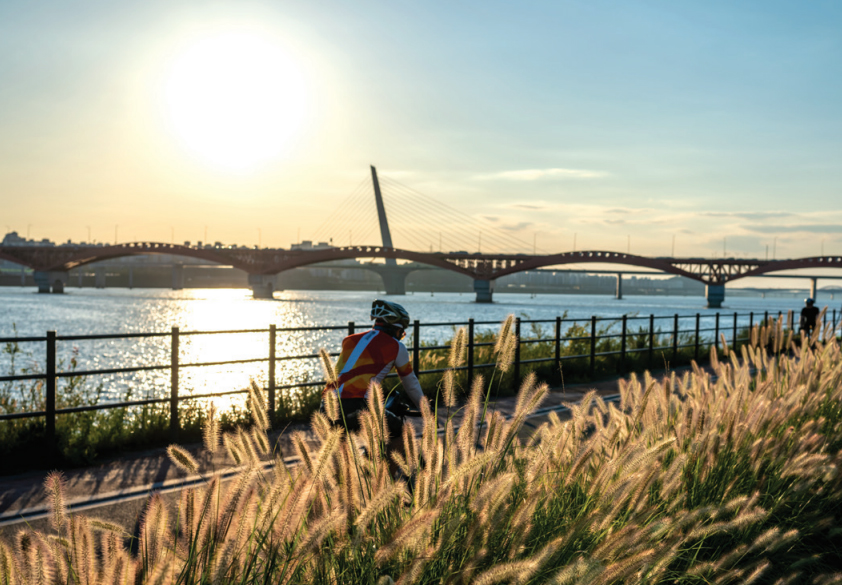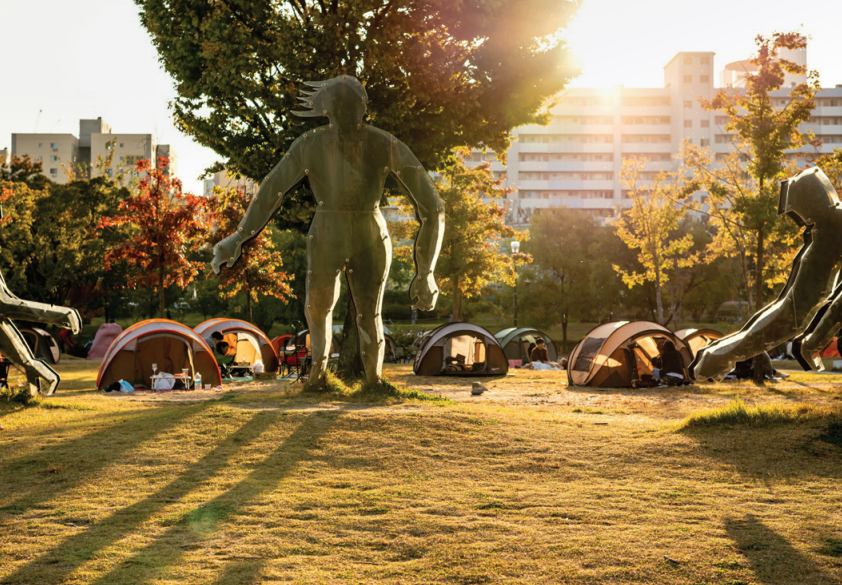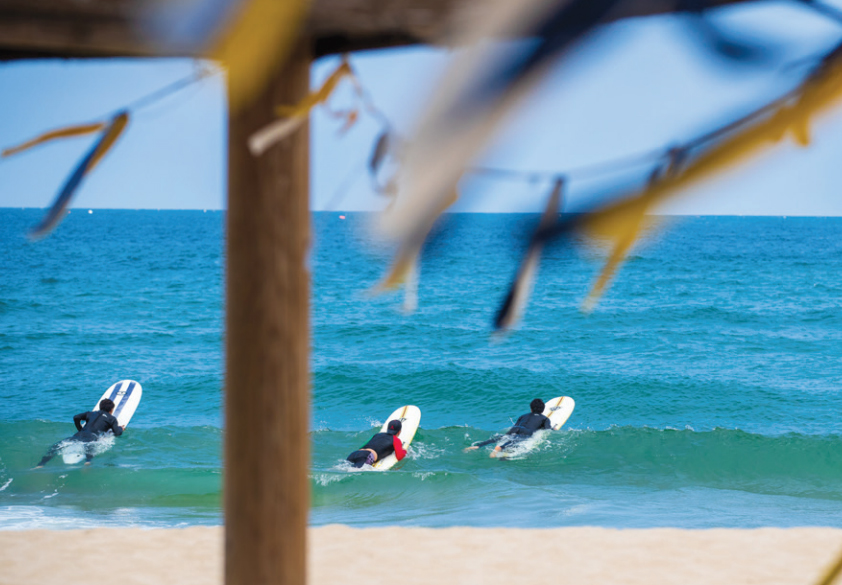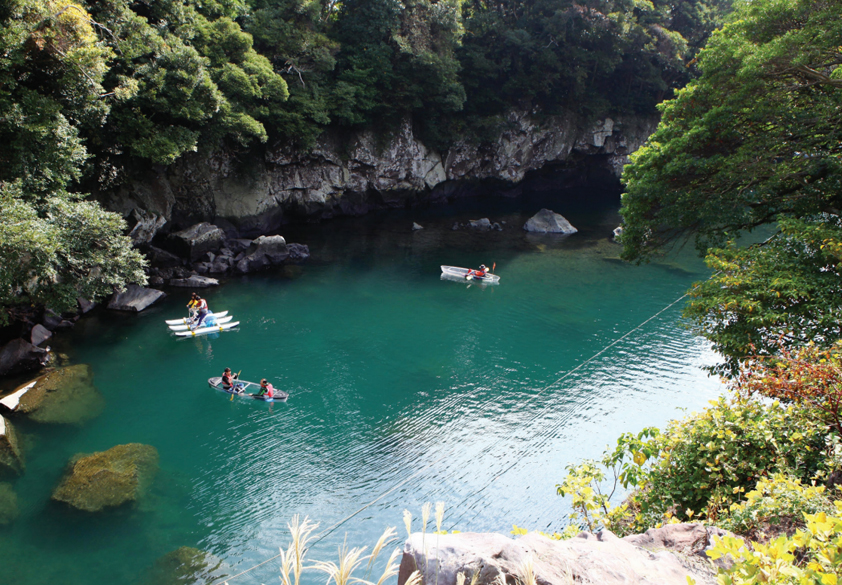เกี่ยวกับประเทศเกาหลี
Bicycle paths are well maintained throughout the country. Each city is well equipped with public bicycles, so there is no problem enjoying riding a bicycle. Although rental charges vary slightly depending on regions, public bicycles can be easily used at an affordable price of around KRW 1,000 per hour. A number of cities operate public bicycles under different name: Ttareungi in Seoul, Fifteen in Goyang, Gyeonggi-do, Tashu in Daejeon, and Eoulling in Sejong.
The Hangang Bike Path is a typical riding route, stretching almost along the riverside of the Hangang River in Seoul. Starting from Nanji Hangang Park (Nanji Camping Site), this path is the longest riding route that runs through Mapo Bridge, Banpo Bridge, and Seoul Forest to Gwangjin Bridge. It is loved by many Seoul citizens and tourists because it connects Seoul to satellite cities and is also located adjacent to Hangang Park.
Thanks to the recent “Newtro” craze, the riding path within the Gyeongchun Line Forest Park is drawing attention from young people. This park was once an unused railway line, but through a major restoration project, the sections of the Gyeongchun Railway and all 12 of the original bridges have been restored. A well-paved bicycle path stretches out along the railway.
The Bukhangang Bike Path connecting Seoul to Chuncheon passes through beautiful lakes and mountains such as Cheongpyeong Lake and Uiam Lake. Cyclists can enjoy beautiful landscapes while cycling comfortably.
Gyeongin Ara Waterway is the first canal in Korea connecting the Hangang River to the waters off Incheon. The bike paths on both sides of the waterway are connected to the Hangang Bike Path, which allows cyclists to ride their bikes from Seoul to the West Sea.

The Hangang Bike Path adjacent to the Hangang Park
Auto Camping
Camping has consolidated itself as one of the main leisure activities in Korea as the number of campers exceeded seven million in 2021. As a result, the country’s camping market was worth KRW 6.3 trillion in 2021, recording an 8.2% increase from KRW 5.8 trillion in the previous year (2020).
The exponentially increased demand has resulted in an increasing number of campgrounds, with camping experiences becoming diversified. In Korea, camping can be enjoyed in diverse ways depending on individual preferences, such as auto camping, glamping, caravanning, car camping, and backpacking.
There is also intense competition for reserving campgrounds located in the city. Examples include Nanji Campground and Noeul Campground in Seoul, and Jaraseom Auto Campground in Gapyeong, Gyeonggi-do. Recently, more and more campgrounds have been operating activity zones such as water parks and leisure parks.

Hangang Park Campground
Campgrounds, including Nanji Campground, located in Hangang Park are always popular.
Water Activities
The number of surfers is on the rise in Korea as an increasing number of Koreans see surfing as a leisure activity that allows them to appreciate the beautiful sea while enjoying the thrill and sense of freedom given by the sea. The top three surfing destinations in Korea include Yangyang in Gangwon-do, Busan, and Jeju Island. Well-equipped with surfing environments, all of them attract many surfers, from beginners to masters.
Surfyy Beach and Jukdo Beach in Yangyang are surfing meccas featuring a low depth of water and waves suitable for surfing. Others include Songjeong Beach in Busan, Jungmun Saekdal Beach on Jeju Island, and Mallipo Beach in Taean, Chungcheongnam-do.
Canoeing and kayaking are activities that allow people to savor nature at leisure. Recently, the “clear kayak” tour has become more popular. The experience consists of riding a kayak with a clear or transparent bottom or hull, allowing participants to see underwater. Kayaking is available in most parts of Jeju Island. Popular locations include Pyoseon Beach, Handam Beach, Woljeong-ri Beach, and Soesokkak Estuary, where the freshwater meets the ocean.
Located in Samcheok, Gangwon-do, Jangho Port is called the Naples of Korea because of its magnificent scenery, including strange rocks, bizarre stones, and the emerald ocean. It features the development of marine activities such as kayaking with a clear kayak and snorkeling thanks to the clean and shallow waters. Cheongpung Lake in Jecheon, Chungcheongbuk-do, is another destination for kayaking.
Activities intended to explore the sea, such as snorkeling and scuba diving, are consistently popular. The representative snorkeling destinations include Panpo Port on Jeju Island, Bongpo Beach in Goseong, Gangwon-do, and Namae Beach in Yangyang, Gangwon-do.
You can enjoy the luxury of yacht riding in Jeju, Gangneung, Busan, and Tongyeong.

Yangyang, Gangwon-do
Many surfers flock to Yangyang to enjoy surfing.

Soesokkak Estuary, Jeju Island
Soesokkak Estuary allows people to enjoy a clear kayak tour while appreciating the natural beauty of Jeju Island.
